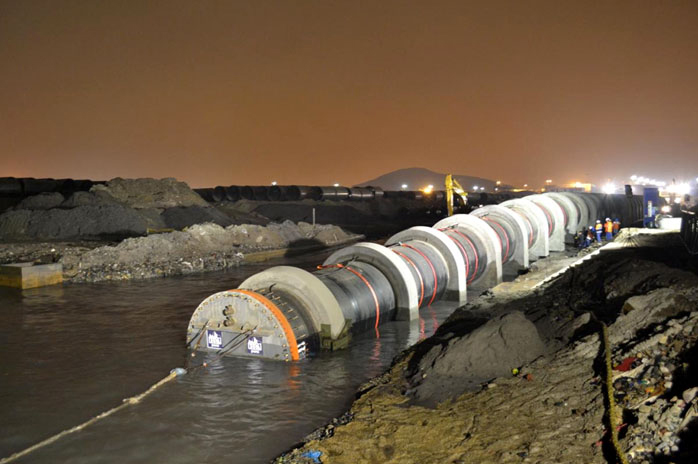Large pipe technology from Krah used for waste water treatment plant in Peru
2016-02-19 14:2:9
By PlasticsToday Staff
Published: November 20th, 2013
Earlier this year, pipe/tube winding equipment manufacturer PPA & Krah supplied polyethylene pipes DN/ID 3000 for a deep water outfall pipeline in Lima, Peru. Krah said that previously the company had successfully installed large outfall pipelines in the Mediterranean Sea and Atlantic Ocean, but that one of the challenges in this project was to open a new site for the Krah large pipe technology in the Pacific Ocean.
The Taboada wastewater treatment plant is one of the largest constructions for sewage treatment in the

world and the aim of the project was to boost the treatment of sewage water in Lima and the neighboring city of Callao, while reducing ocean pollution and also improve the health conditions in the area. The Taboada plant, which is located in Callao, is reportedly the largest water-treatment center in South America and will increase sewage treatment to 75% from the current 16%, according to the La Republica.
A wastewater treatment plant normally needs a large outfall to comply with the project requirements. The dilution and hydraulic calculations were made and a pipe with an internal diameter of 3.000 mm was selected. The outfall is located in a seismic-sensitive region and it must be corrosion free.
It was decided by the end-user and main contractor to consider the large diameter helical structured polyethylene pipes (according to DIN16961) fabricated with Krah technology combined with electro fusion technology to meet the project requirements.
The pipes and fittings were manufactured and fabricated by PPA & Krah in Spain and were then sent to Lima in four different shipments. Each pipe had a length of 6 m and the wall construction was not solid - it was a structured wall design, with the same or better characteristics than a solid wall pipe. Due the unique production process, the pipes have no frozen stresses in the pipe wall and the profiled wall structure can be designed tailor made for the application requirements.
The helically wound pipes and fitting were welded by a patented electro-fusion welding procedure and it was ballasted on site before the launching of the sinking strings to the sea from the working ramp made onshore. By fixing them on special points of the special made pipes, all ballast blocks had no screws and bolts, so there's no chance of an unwanted sliding of the blocks.
"The construction of the sea outfall, La Taboada, was an amazing challenge for the PPA Group," the company said. "Up to 19 sinking strings were sunk and connected off-shore. The deepest point of the installation was -20 m in the Pacific Ocean and every string was joined by integrated flanges."
latest Information Center
- Hot News About Exhibitions
- TL-3000 Steel Reinforced Polyethylene Corrugated Pipeline Exported to Eastern Europe
- The Death of Thermoset Composites Has Been
- Manufacturing 4.0 means more automation, more digital information and more connectivity
- Large pipe technology from Krah used for waste water treatment plant in Peru